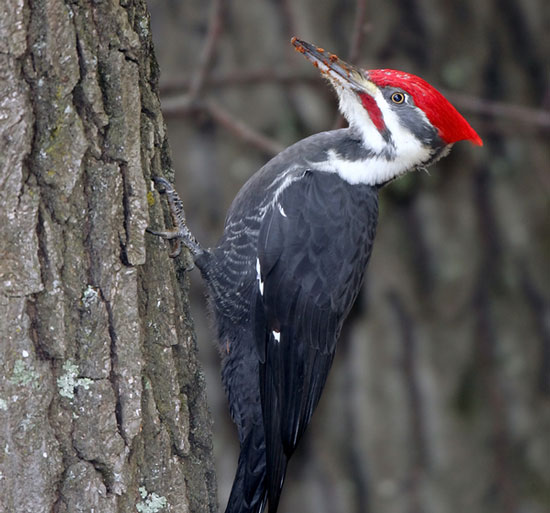Secret bones of woodpecker heads
Researching the head bones of woodpeckers can help scientists build helmets that protect the brain from serious injury.
Research results on woodpeckers show that despite the unique hunting habit, this bird has no nerve damage or serious injury. When using sharp beaks to tap continuously at a fast pace on the trunk, the woodpecker suffered at the same time tremendous pressure on the head - the pressure could cause people to die. But in fact this bird is still unharmed. That's why experts study how woodpeckers are protected from harmful effects during the trunk operation, hoping to find new approaches to prevent and treat head injuries. people.

Head injury is one of the major causes of death worldwide. Estimates of brain damage account for up to 15% of deaths and disabilities. These injuries may occur under the influence or sudden change in the speed of the head. Even so, the law that applies to humans does not seem to have any impact on woodpeckers, regardless of how often they use a beak to cut the trunk at speeds of 6-10m / sec, and sometimes produce force pressed to 1,000G.
Experts from Beijing Aviation University and Hong Kong Polytechnic University have chosen to study the woodpecker species that inhabit the Eurasian continent and are the most popular species in the UK. Research results published in scientific journal PLoS ONE show that these birds are equipped with complex shock reduction systems inside the skull. The researchers used high-speed camcorders and performed brain scanning of woodpeckers to determine the structure of the skull. They found that the structure of the head bone and mine plays an essential role in reducing the impact of the collision. And this shockproof system is not based on a single factor but the result of a combination of different morphological characteristics.
After research, experts say it is possible to apply this discovery in the design of new generation helmets to minimize the impact of deadly collisions on the human brain.
- 10 interesting secrets about the woodpecker
- Everyone was startled to learn how this bird kept its tongue longer than its head
- Squirrels are spectacularly knocked down by woodpeckers
- Why do woodpeckers type forever but not ... headache?
- The fierce battle between snakes and woodpeckers
- The secret of specialties of heads of state (1)
- 10 interesting things about the human skeleton
- Nice photo: Red-headed woodpecker perches on food cages
- Interesting facts about bones are not well known
- Discovering tiny species of legless lizard and woodpecker in Brazil
- Snakes have two heads with different personalities
- The secret to protecting bones is always strong
 Animal 'suffering' after hibernation
Animal 'suffering' after hibernation Why do goats climb well?
Why do goats climb well? Scientists were surprised to see chimpanzees eating turtles
Scientists were surprised to see chimpanzees eating turtles Giant catfish died deadly due to drought in Thailand
Giant catfish died deadly due to drought in Thailand This is why a venomous snake with its head cut off can still bite people to death
This is why a venomous snake with its head cut off can still bite people to death  Head Transplants - Shocking Experiments
Head Transplants - Shocking Experiments  The Secret Behind Car Headrest Design That You Don't Know
The Secret Behind Car Headrest Design That You Don't Know  Descartes' 'Dream of Revelation': What Opened Up the Whole of Analytical Geometry and Philosophy for Humanity
Descartes' 'Dream of Revelation': What Opened Up the Whole of Analytical Geometry and Philosophy for Humanity  Head transplant using robots and AI: Too attractive and too dangerous!
Head transplant using robots and AI: Too attractive and too dangerous!  NASA released images of snake heads emerging from other planets
NASA released images of snake heads emerging from other planets 